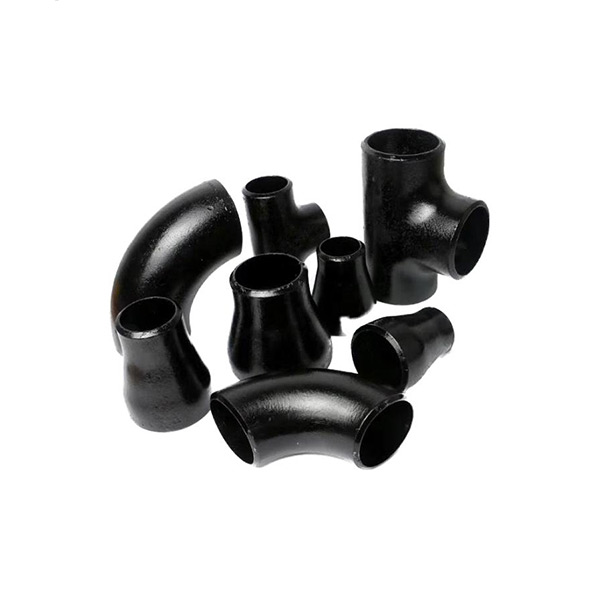Contact information

seamless
gas, power generation, chemicals, and construction due to their strength, durability, and high-performance characteristics. These pipes and fittings are manufactured without a seam or welded joint, which gives them distinct advantages over welded alternatives.
Seamless Pipe
A seamless pipe is a type of pipe that is made from a single piece of metal, usually through processes such as extrusion or rotary piercing. Because seamless pipes do not have a weld seam, they are considered to have better strength and reliability in demanding applications.
Key Features of Seamless Pipes:
No Weld Seams:
Seamless pipes are made by extruding or drawing solid billets through a die to form a hollow tube. This eliminates the potential for seam weaknesses that are inherent in welded pipes.
Strength:
Without a welded seam, seamless pipes have uniform strength and are less prone to failure under high pressure or extreme conditions. They are often used in applications where pressure and temperature are high.
Durability:
Seamless pipes exhibit better resistance to stress, corrosion, and cracking because of the uniform structure of the metal. This makes them ideal for critical applications like high-temperature and high-pressure systems.
Applications:
Oil and Gas: Used in pipelines for transporting crude oil, natural gas, and other fluids.
Power Generation: Used for high-pressure steam lines and nuclear reactors.
Chemical and Petrochemical: For high-performance systems requiring strength and corrosion resistance.
Automotive and Aerospace: For components subject to high stress or temperature variations.
Material:
Seamless pipes are made from various materials such as carbon steel, alloy steel, stainless steel, and other metals. These materials offer different levels of corrosion resistance, strength, and temperature tolerance.
Manufacturing Process of Seamless Pipes:
Extrusion Process: In this method, a solid billet of metal is heated and then passed through a die to form a hollow tube. The tube is then further elongated to the required length and diameter.
Rotary Piercing: In this process, a solid billet is pierced with a rotary tool, creating a hollow section, which is then elongated by elongation and reduction processes to achieve the desired dimensions.
Seamless Fittings
Seamless fittings are manufactured from the same materials as seamless pipes, and they are made without any welded seams. These fittings are used to join or connect various segments of pipe in a fluid handling system. Common types include elbows, tees, reducers, and couplings.
Types of Seamless Fittings:
Elbows:
These are used to change the direction of fluid flow. They are typically available in 90°, 45°, and 180° angles. Seamless elbows are ideal for systems where the change in direction needs to maintain the same pressure and strength as the pipe itself.
Tees:
A tee fitting is used to create a branch in the pipe, where fluid can be diverted or split. They are available in various configurations like straight tees (T-shaped) or reducing tees (with different pipe sizes on each branch).
Reducers:
Reducers are used to connect pipes of different diameters. They help to adjust the flow rate or pressure in the system. Seamless reducers maintain the pipe's strength, making them suitable for high-pressure or high-temperature applications.
Couplings:
A coupling is used to join two pieces of pipe together. It can be used for both seamless and welded pipes, and seamless couplings are especially important when uniformity of strength and resistance to stress is required.
Caps and Plugs:
These are used to seal off the ends of a pipe. They ensure that there is no leakage, especially in systems under high pressure.
Flanges:
Flanges are used to connect sections of pipe or to equipment. They are bolted together and create a strong, reliable seal. Seamless flanges are particularly important in systems where leak-proof connections are critical.
Advantages of Seamless Fittings:
Higher Strength: Just like seamless pipes, seamless fittings are stronger due to the absence of welding, which can introduce weak points.
Better Pressure Resistance: Seamless fittings are capable of handling higher pressure applications due to their continuous structure.
Corrosion Resistance: Seamless fittings maintain the same high level of corrosion resistance as seamless pipes, making them suitable for challenging environments like chemical plants or offshore platforms.
Uniformity and Reliability: These fittings maintain the structural integrity of the pipe without weak points that might develop from welding, making them more reliable in critical applications.
Applications of Seamless Pipes and Fittings:
Oil and Gas Industry: For transporting high-pressure fluids like crude oil and natural gas.
Power Generation: Used in steam systems and nuclear power plants, where both high pressure and temperature are involved.
Chemical and Petrochemical Industries: For handling corrosive fluids and gases.
Food and Beverage Processing: For sanitary systems requiring high cleanliness standards.
Aerospace and Automotive: For lightweight, high-strength components, including exhaust systems and pressure vessels.


